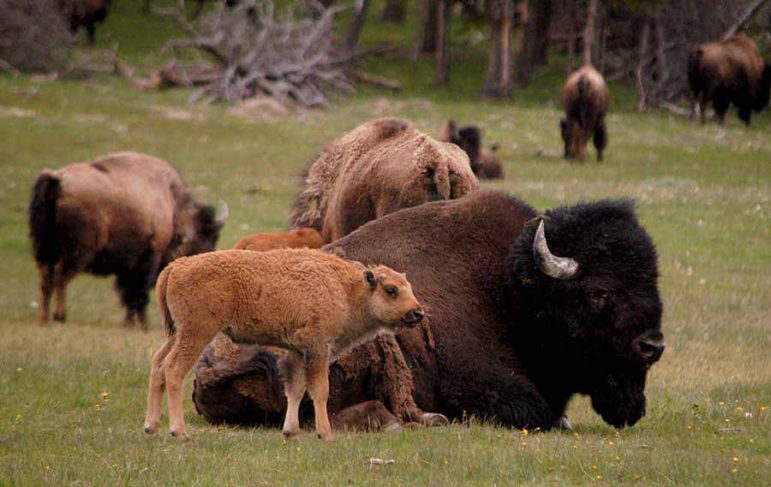
A group of bison graze and rest near the roadside south of Madison in Yellowstone National Park.
Wildlife managers in Yellowstone National Park have chosen not to use an unusual drug delivery method that had been proposed for vaccinating bison against a disease feared by cattle ranchers in nearby communities.
Citing a lack of scientific evidence of its effectiveness, the National Park Service has dismissed the potential use of “bio-bullets” as a way to deliver brucellosis vaccines to wild bison in the park.
In a statement released Tuesday by the park’s public affairs office, Yellowstone Superintendent Dan Wenk said it doesn’t make sense “to spend millions of taxpayer dollars and invest 30 years of effort in hopes of a small reduction in the prevalence of brucellosis in bison with no significant benefit to bison conservation.”
The bio-bullet vaccination plan was one option under consideration by the Park Service as part of an environmental review. It called for bison to be shot with pellet guns that embed a payload containing a vaccine that would dissolve under the animal’s skin.
While the technique has been used successfully on elk at artificial feeding areas, questions persist about its efficacy with thicker-hided bison, particularly at ranges beyond 20 yards. Another proposed option involved dropping a bait with an oral vaccine from helicopters.
Both bison and elk are carriers of brucellosis, an infectious disease which can cause miscarriages among livestock. A brucellosis outbreak among cattle herds can be financially devastating, requiring widespread livestock quarantine and euthanasia.
National Park Service managers have long struggled with how to handle hundreds of bison moving out of the park along the Yellowstone River during harsh winters when heavy snow and cold temperatures drive the animals to seek milder habitats and more abundant forage.
Yellowstone is home to approximately 4,600 bison, and large numbers of them often migrate through the park’s north entrance and through the small town of Gardiner, where the animals have the potential to damage property, injure people and complicate ranching operations.
Cattle ranchers have long worried that livestock could pick up the disease from free-roaming wildlife, although there are no documented cases of bison spreading brucellosis to domestic cattle.
Selective culling at holding facilities near the park has been politically unpopular in the past and proven to be a public relations disaster for the Park Service.
Wildlife managers and policymakers are examining options that include expansion of limited bison hunting outside of park boundaries, transferring some bison to nearby tribal agencies and increasing tolerance for bison outside the park through agreements with private landowners and public land managers.
Under the decision announced Tuesday, wildlife managers will continue the currently authorized syringe vaccination of bison calves and yearlings periodically captured at the northern boundary of the park.
The bio-bullet option was dismissed by park managers because of what they said were “substantial uncertainties over vaccine effectiveness and delivery, the cost of a 30-year program, potential impacts to wildlife behavior and the visitor experience and evaluation of public comments.”
Additional information and supporting documents are available online.
